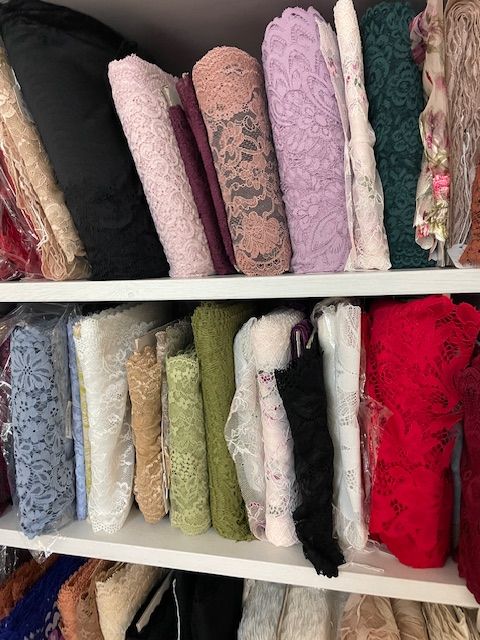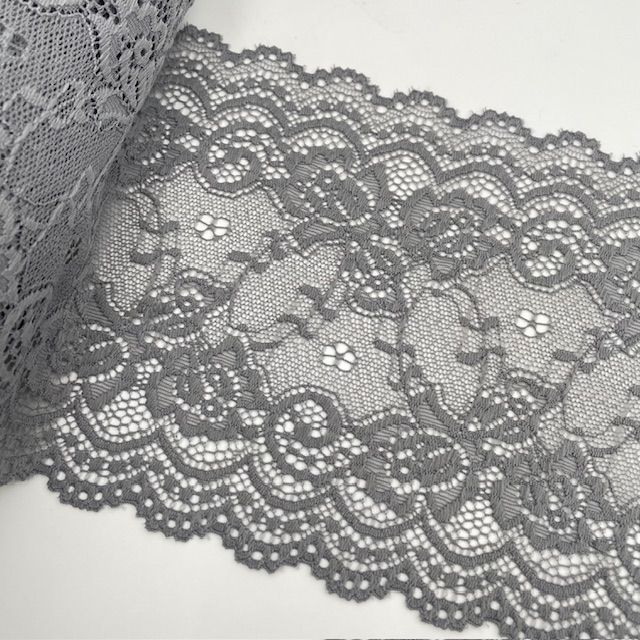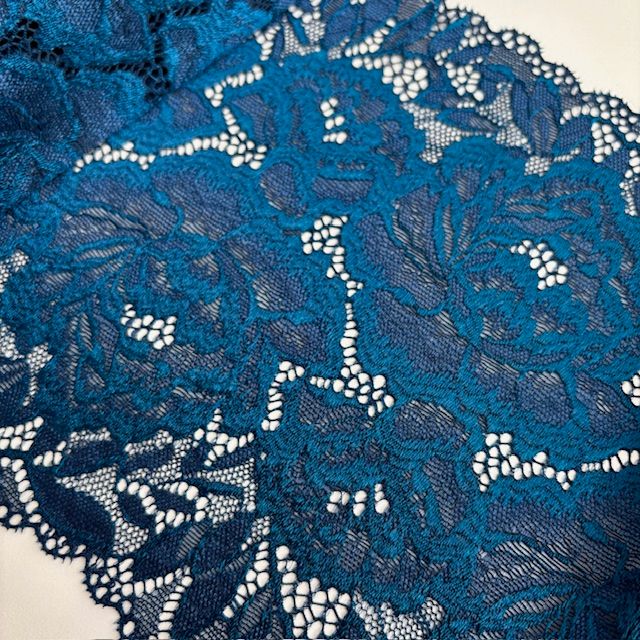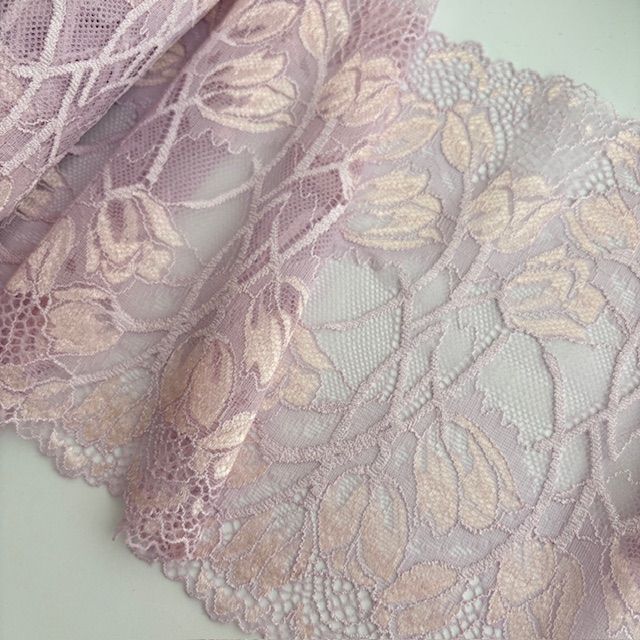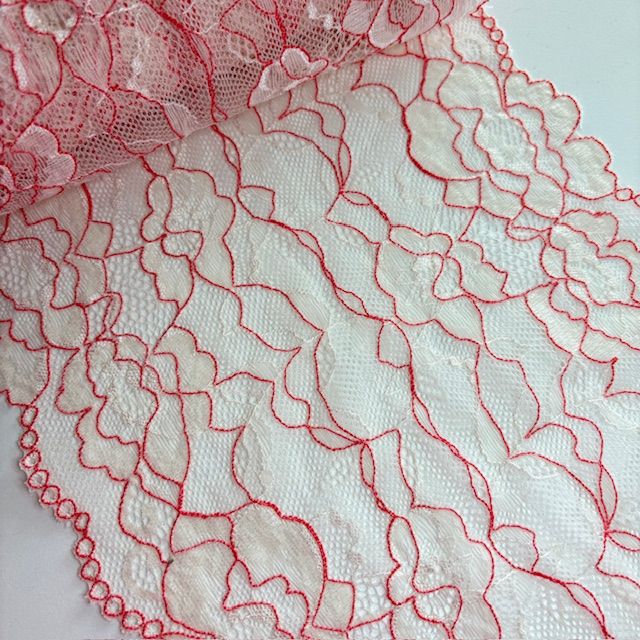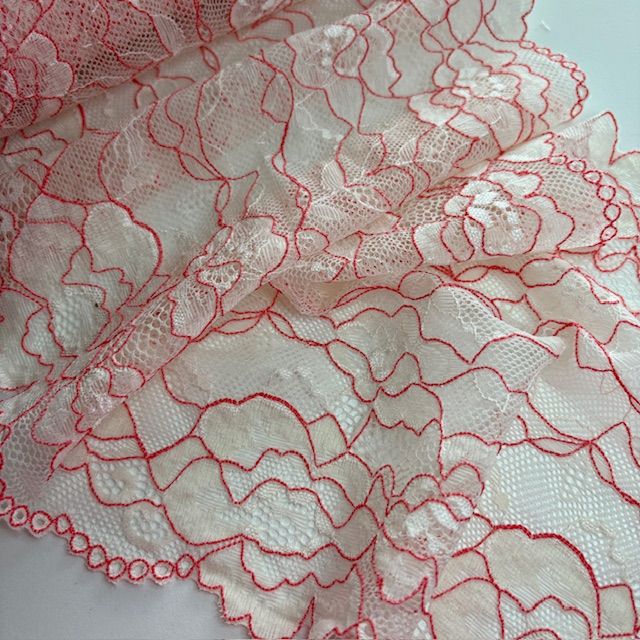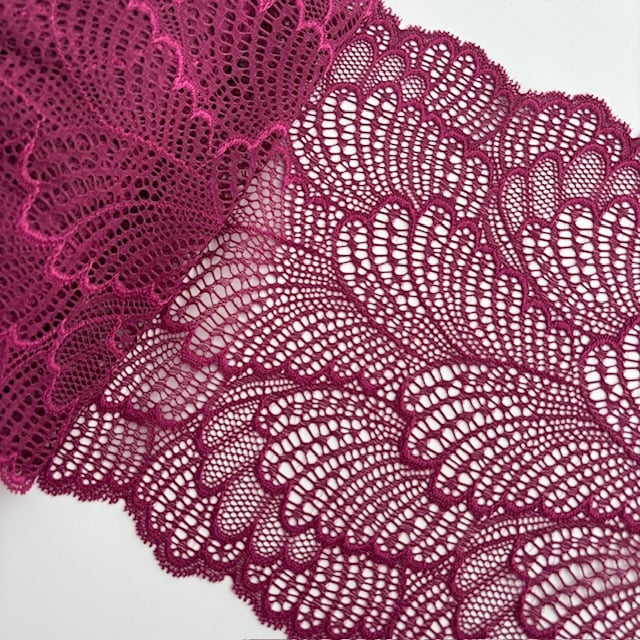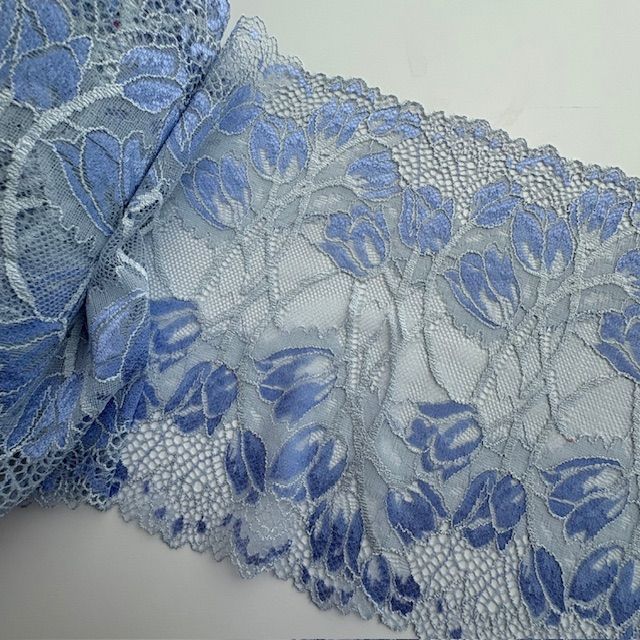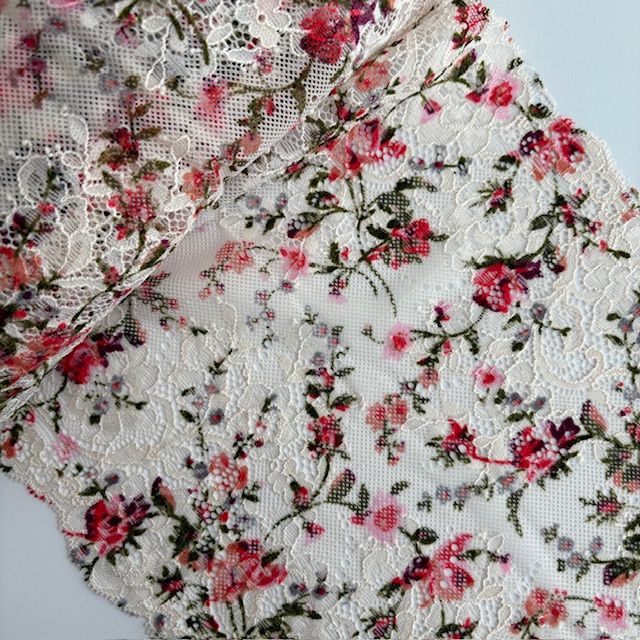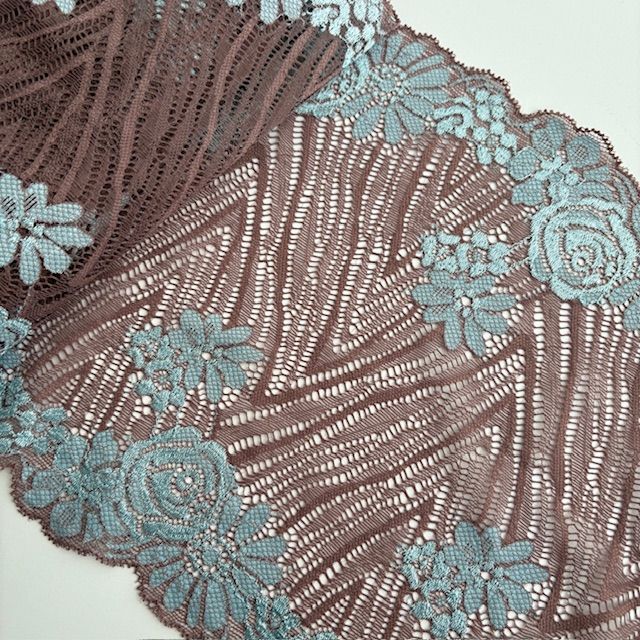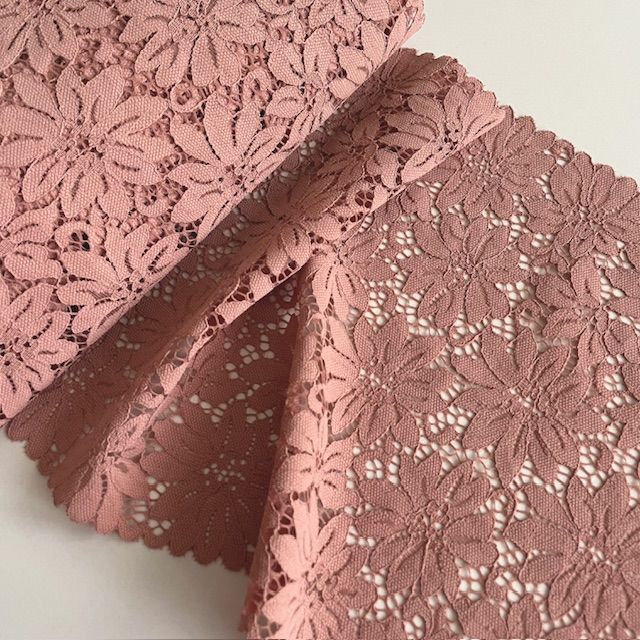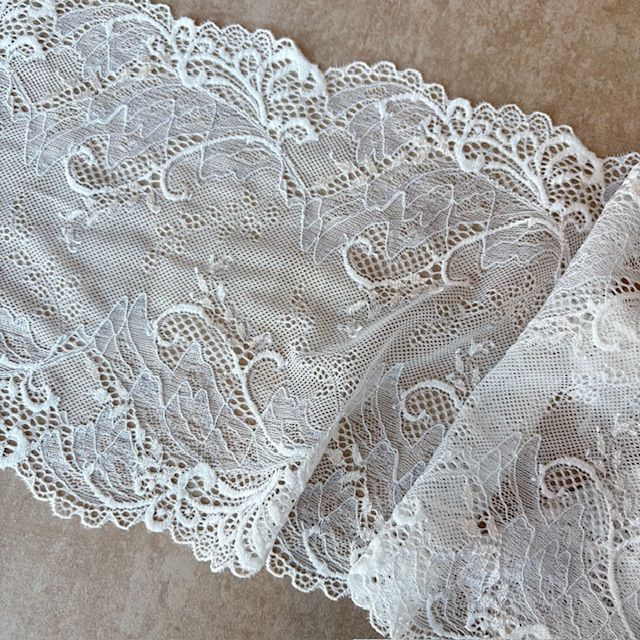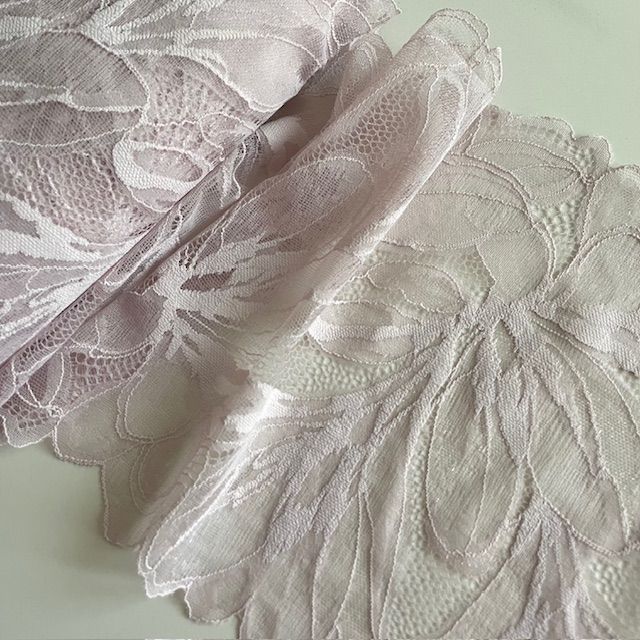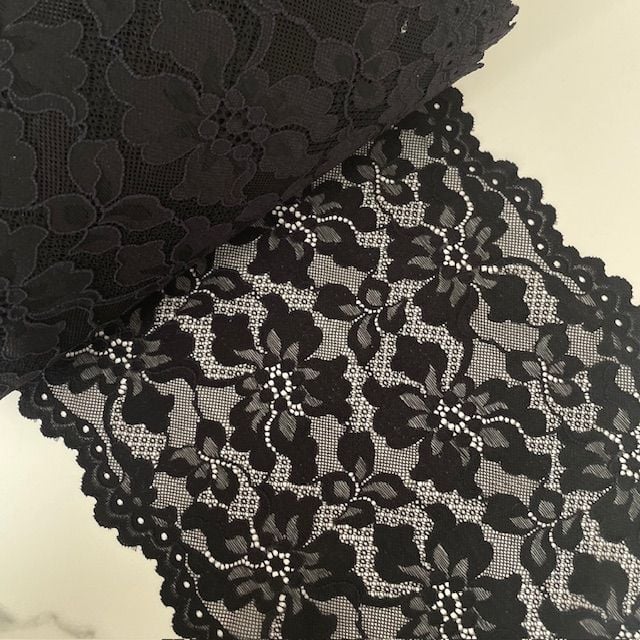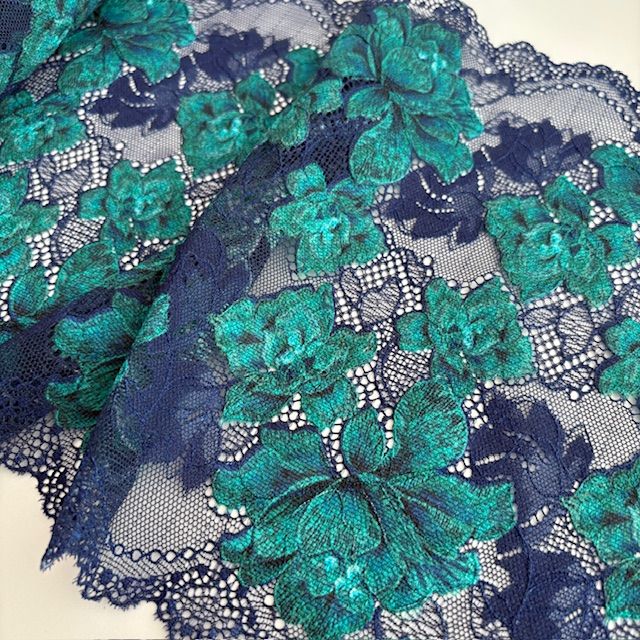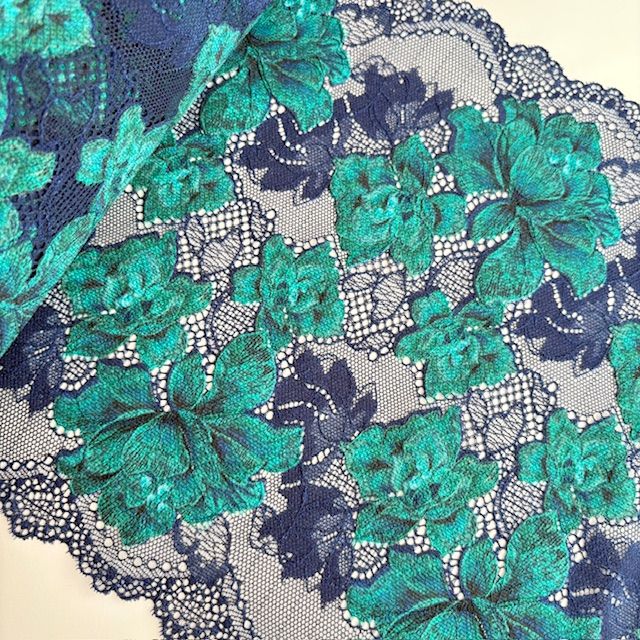Lace, an incomparably delicate openwork fabric, has been used for centuries to make elegant, refined garments. Discover our collection of this unique fabric for your fashion creations.
Filtres
Enabled filters
Filter by category
Filter by Price
Prix minimum:
Prix maximum:
58 Products
Lace: An Elegant and Timeless Art in the World of Fashion
Lace, a fine, delicate fabric, has survived the centuries as a symbol of refinement and femininity. This complex fabric, often associated with luxury garments, has found its place in a variety of creations, from wedding dresses to sensual lingerie. In this article, we explore the world of lace, from its manufacture to its applications in fashion, via its different varieties. We'll answer some essential questions about this bewitching fabric, to help you choose the best lace for your creations.Contents
- How do you make lace?
- What is the capital of lace?
- Which town specialises in lace?
- Which town specialises in lace?
- What is guipure lace?
- What type of lace should you choose for your creations?
1. How is lace made?
Lace is a delicate fabric made by a complex process that requires great craftsmanship. There are several methods of making lace, but the two most common are hand lace and machine lace.- Hand lace : This method, used since the 16th century, is one of the oldest. Lacemakers meticulously weave the thread to create intricate designs, often on a tulle or cotton backing. The art of hand lacemaking is a form of embroidery in which each stitch is carefully made, sometimes over several days.
- Mechanical lace : Today, most lace is made using machines. These machines reproduce the meticulous work of lace-makers, but on a larger and faster scale. They make it possible to produce lace by the metreCotton lace is a highly prized fabric in the fashion industry. Cotton lace, like lace by the metre or the bohemian laceThis method is often used to ensure mass production while maintaining a refined appearance.
2. What is the capital of lace?
La capital of lace is unquestionably Calaisin France. The town is world-renowned for its unique lace-making expertise. Since the 19th century, Calais has been at the heart of lace production, thanks in particular to the invention of the lace machine by John Leavers in 1830. This innovation made it possible to produce quality lace while meeting the growing demand. Today, Calais continues to play a key role in lace manufacture, with companies exporting their products all over the world. Lace made in Calais is prized by fashion houses, particularly for sophisticated lace dresses and fine lingerie.3. Which town specialises in lace?
In addition to Calaisanother town famous for its lace is Venicein Italy. The Venice laceor Venetian laceIt is one of the oldest and most prestigious. It is renowned for its finesse, elegance and intricate patterns. Venetian lace is often used for haute couture garments and refined accessories. In Belgium, the town of Bruges is also famous for its lace work, as is Brussels which has a long tradition in this field. In these regions, lace is a veritable cultural and craft heritage.4. What is guipure lace?
La guipure lace is a type of lace characterised by openwork patterns and decorative elements that appear to float on the background fabric. Unlike other types of lace where the supporting thread is visible, guipure lace is distinguished by the absence of a transparent background. It is made using thick threads and can be very ornamental. Guipure is ideal for fashion creations that require a fabric that is both stiff and ornate, such as wedding dresses, evening gowns and lingerie.5. What type of lace should I choose for my creations?
The type of lace you choose depends above all on how you intend to use it. There are several varieties of lace, each with its own unique characteristics.- Cotton lace : Cotton lace is very popular for summer or bohemian creations, and is light, comfortable and natural-looking. It is ideal for lace dresses and lightweight garments, but also for accessories such as scarves and tops. It is also, but more rarely, used in the manufacture of lingerie.
- Lace by the metre : If you're looking for lace to use for sewing projects, metre lace is an excellent choice, whether in braid or wide width. It's available in a wide range of patterns and colours, so you can personalise your creations to your taste. Whether for a lace dress or for a lingerie more sophisticated, lace by the metre offers great flexibility.
- Bohemian lace : Bohemian lace, which is often more relaxed and airy, is ideal for creations inspired by the bohemian style, such as the lace dresses or ethnic-inspired accessories.
- Guipure lace : As mentioned above, guipure is perfect for more robust and elegant creations. It is ideal for evening gowns or avant-garde fashion creations.
